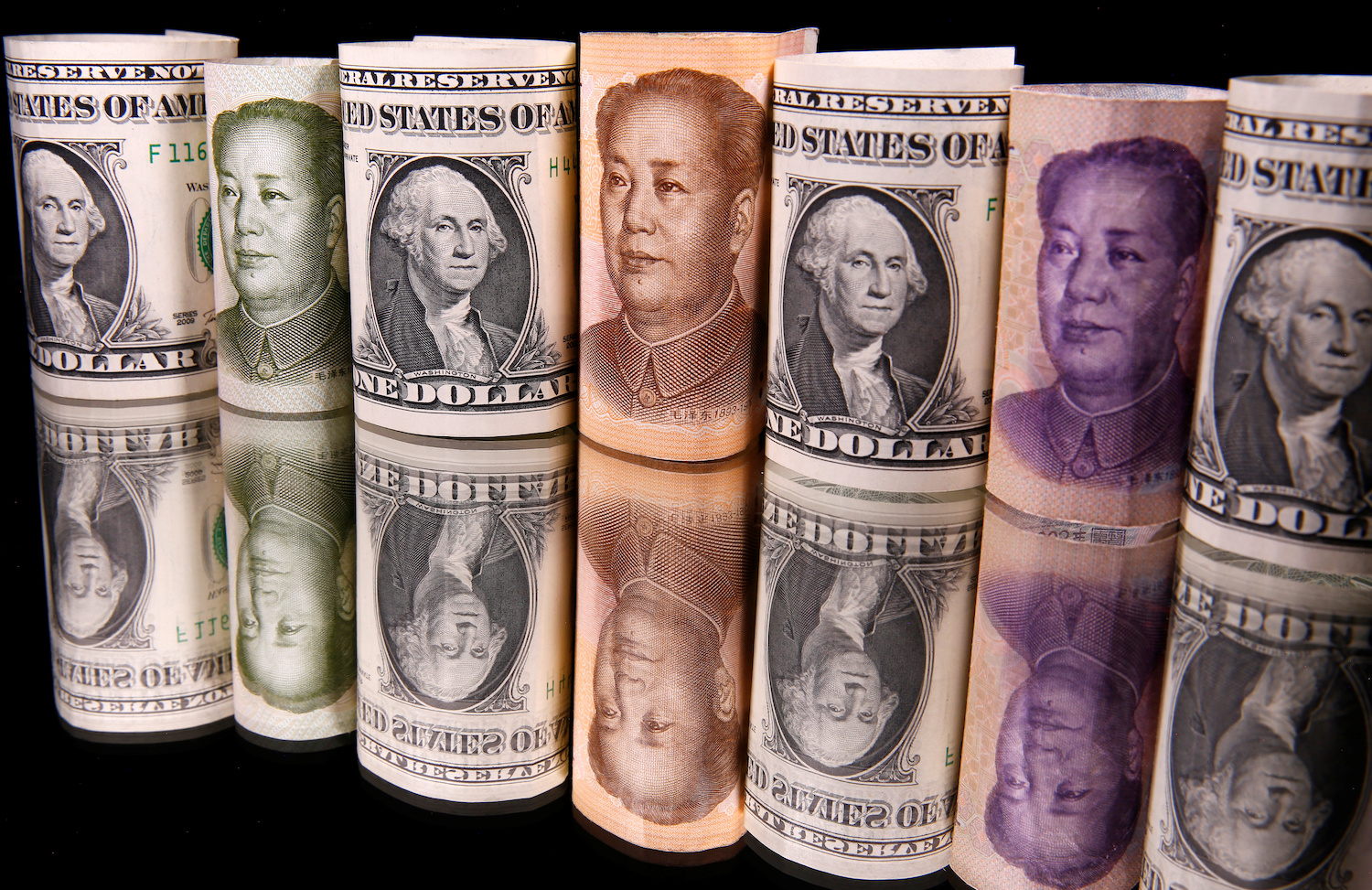(ATF) The Chinese yuan firmed after the currency was guided to a near two-and-a-half-month low against the dollar before recovering swiftly with a jump in trading later on Tuesday, supported by heavy dollar selling and central banker comments.
With the US dollar strengthening recently, the yuan exchange rate has fluctuated downward. On March 9, the central bank set parity of the yuan against the US dollar at 6.5338, a sharp drop of 543 basis points from the previous trading day, falling below the 6.50 mark, the lowest since January 4 this year, and the largest drop since July 20, 2018. On January 4, the central parity of the yuan was reported at 6.5408, and has since fluctuated slightly in the range of 6.4604-6.4904.
Some traders have suggested that Chinese authorities are happy with the weaker currency, but market analysts generally believe the reason for the decline in the yuan exchange rate to the USD is due to the strengthening of the dollar, and the US dollar index. This week the US dollar index has rebounded for the third consecutive week, rising from a low of 90.04 on February 24 to 92.4 on March 8, a new high since November 24, 2020.
Li Yiju, a researcher at the Bank of China Research Institute, told Ynet that since late February, expectations for the prevention and control of the US epidemic have been better, and the fiscal stimulus plan has led to an increase in bond supply, which has pushed up US Treasury yields and led to a rise in the US dollar index. The reduction in the interest rate differential between China and the United States has led to a reduction in the pressure of the yuan’s recent appreciation.
The Huatai Securities macro team believes that the global trade and industrial cycle has rebounded, and that China should benefit as a large manufacturing country, while the United States faces a marginal returns on investment due to the substantial expansion of currency and fiscal policy, so the US dollar will still weaken in the medium term, while the yuan will appreciate further.
Wang Tao, head of UBS Asia Economic Research and chief China economist, was reported by Ynet as saying yesterday that, this year as a whole, the exchange rate of the yuan against the dollar should continue to remain strong and may appreciate further. She predicts that the yuan rate against the dollar will reach 6.40 by the end of the year, and the extent of appreciation in the process will depend on the trend of the dollar. UBS judges that this year, the dollar is under pressure to weaken whether it is against the euro, the yen or other emerging market currencies.
Wang Tao also emphasized that there will not be as much room for appreciation of the yuan against the USD this year. She noted that while continuously attracting foreign investment into the Chinese market, the Chinese government is also gradually and steadily loosening the channels and scale of domestic capital to invest overseas. Therefore, Wang Tao believes that this year’s yuan appreciation is limited.
The weaker midpoint fixing dragged the spot market lower to 6.5445 at one point in morning trade, the softest level since Dec. 31, 2020. But it recovered all intraday losses and changed hands at 6.5225 by midday, 46 pips firmer than the previous late session close.
Rebound
Currency traders said the V-shaped rebound was partially driven by heavier dollar selling from corporate clients, as some had been waiting for a better price to convert their dollar receipts. “Large amounts of dollar selling emerged as the spot price approached 6.55 per dollar level,” a trader at a Chinese bank said.
Several traders said they had not yet seen state banks stepping into the spot market to rein in the weakness in the yuan, which has happened in the past during bouts of yuan volatility. A second trader said authorities were more willing to tolerate a slightly weaker currency than they were a strong yuan, which could hurt exporters.
Chen Yulu, deputy governor of the PBOC, told the state-backed Yicai, published on Tuesday, that the central bank would further improve rules and transparency of monetary policy operations to effectively manage and guide market expectations.
Some market participants described the senior central banker’s remarks as part of an official attempt to prop up sentiment and said irrational and rapid moves were not ideal for authorities.
By midday, the offshore yuan was trading at 6.5344 per dollar after hitting a low of 6.5628, the weakest level since Dec. 1, 2020.
With reporting by Reuters
























